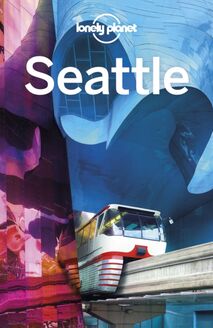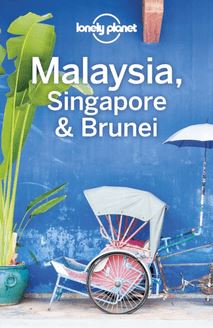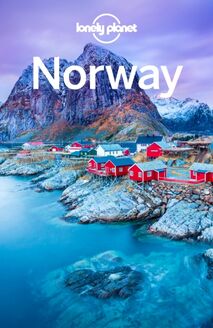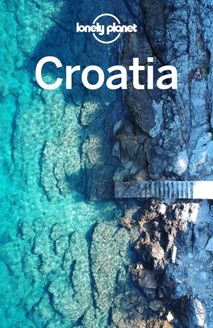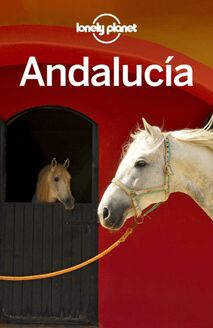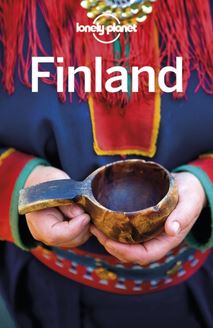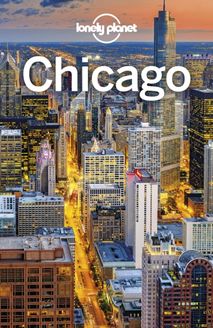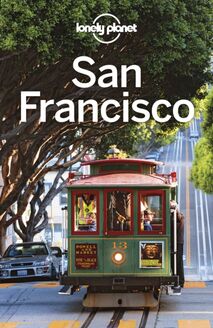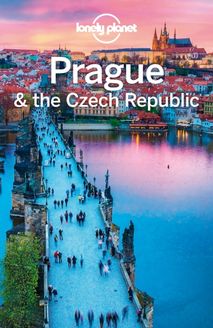Lonely Planet Pocket Milan , livre ebook
138
pages
English
Ebooks
2018
Vous pourrez modifier la taille du texte de cet ouvrage
Obtenez un accès à la bibliothèque pour le consulter en ligne En savoir plus
Découvre YouScribe en t'inscrivant gratuitement
Découvre YouScribe en t'inscrivant gratuitement
138
pages
English
Ebooks
2018
Vous pourrez modifier la taille du texte de cet ouvrage
Obtenez un accès à la bibliothèque pour le consulter en ligne En savoir plus
Publié par
Date de parution
01 décembre 2018
Nombre de lectures
16
EAN13
9781788681728
Langue
English
Poids de l'ouvrage
28 Mo
Publié par
Date de parution
01 décembre 2018
Nombre de lectures
16
EAN13
9781788681728
Langue
English
Poids de l'ouvrage
28 Mo
Contents
Plan Your Trip
Welcome to Milan
Top Sights
Eating
Drinking & Nightlife
Shopping
Art
Architecture
History
Design
For Kids
Four Perfect Days
Need to Know
Milan Neighbourhoods
Explore Milan
Duomo & San Babila
Quadrilatero d’Oro & Giardini Pubblici
Brera & Parco Sempione
Porta Garibaldi & Isola
Corso Magenta & Sant’Ambrogio
Navigli
Porta Romana & Porta Vittoria
Worth a Trip
Borromean Islands
Como
Survival Guide
Survival Guide
Before You Go
Arriving in Milan
Getting Around
Essential Information
Language
Behind the Scenes
Our Writers
Welcome to Milan
Milan is Italy’s city of the future, a fast-paced metropolis where creativity is big business. From cutting-edge design to creative dining and a sidewalk scene that makes Fashion Week seem redundant, Milan is both thrilling and fun. Everyone here is fizzing with ideas and ambition, and it’s catching. Unlike nonna’s Italy further south, the Milanese, like New Yorkers, are refreshing modernists. The main currency here isn’t the euro or amazing design gadgetry – it’s inspiration.
Duomo | DENZEL9/SHUTTERSTOCK ©
1
Milan Top Sights
Duomo
With its ageless marble facade and countless pinnacles and spires piercing the sky, Milan’s splendid Gothic cathedral is a veritable outdoor sculpture museum.
SHINKAJI/SHUTTERSTOCK ©
Milan Top Sights
The Last Supper
Saved from WWII bombs by a bank of sandbags, Leonardo da Vinci’s Last Supper ( Il Cenacolo ) is one of the world’s most iconic images.
YURI TURKOV/SHUTTERSTOCK ©
Milan Top Sights
Pinacoteca di Brera
Founded in the 18th century, the Pinacoteca houses a priceless collection of Old Masters that include the likes of Titian, Veronese, Bellini and Caravaggio.
PAOLO BONA/SHUTTERSTOCK ©
Milan Top Sights
Museo del Novecento
Milan’s stunning collection of 20th-century art is fittingly housed in the rigorous, Fascist-era Palazzo dell’Arengario.
CLAUDIO DIVIZIA/SHUTTERSTOCK ©
Milan Top Sights
Castello Sforzesco
Former residence of the dukes of Milan, Sforza castle is one of the biggest citadels in Europe. It now houses the city’s civic museums.
CATARINA BELOVA/SHUTTERSTOCK ©
Milan Top Sights
Museo Poldi Pezzoli
Poldi Pezzoli’s historically themed apartments offer a preserved-in-amber insight into the heyday of 19th-century patronage.
LESTERTAIR/SHUTTERSTOCK ©
Milan Top Sights
Isole Borromee
In Lake Maggiore’s most beautiful corner, the Borromean Islands harbour the spectacular palaces of the Borromeo family.
ANTON_IVANOV/SHUTTERSTOCK ©
Milan Top Sights
Museo Nazionale Scienza e Tecnologia
Dedicated to inventor Leonardo da Vinci, Italy’s finest science and technology museum is housed in a 16th-century Olivetan monastery.
VIKTOR GLADKOV/SHUTTERSTOCK ©
Eating
Milan’s dining scene is like its fashion scene, with restaurant openings hotly debated and Michelin-starred tables hard to come by. Milanese cooking is influenced by French and Austrian traditions, in addition to which the city offers a wealth of regional Italian and ethnic eateries. Make reservations Friday through Sunday.
KOKOPHOTOS/SHUTTERSTOCK ©
Food History
Northern Italian food is city food originating from one of the richest urban cultures on the planet. Peasants may have toiled in the fields, but they rarely had the means to eat anything more exciting than wild garlic, greens and polenta. The people with the real knowledge to transform the country’s growing abundance of ingredients were the inhabitants of wealthy cities like Milan. As Venetian and Genoese sailors offloaded their cargoes of spices, sugar, saffron, fruit, citrus and nuts from around the Mediterranean, so traders distributed them via northern Italy’s navigable network of rivers. Powerful clans like Milan’s Sforza’s competed for a slice of the profits, taxing trade and patronising the best cooks of the day. It was in this competitive commercial environment that Italy’s great cuisine was born.
Foreign Flavours
Milan’s generations of internal Italian immigrants have injected the cuisine of virtually every region into the lifeblood of the city, where you’ll often find Genovese, Piedmontese and Tuscan dishes sharing menu space with local Lombard classics. As well as the food of these near neighbours, Milan’s increasingly diverse global population is also reflected in the city’s eating habits. Unusually for Italy, Japanese and Chinese restaurants are commonplace and the cuisines of India, the Middle East, sub-Saharan Africa and, most recently, Latin America are all represented.
Best Milanese
Ratanà A native Milanese chef turns out some of the city’s best local cuisine.
Latteria di San Marco A classic family concern dishing up Milanese home cooking.
Trattoria Milanese Old-school restaurant in a pretty cobbled street.
Luini The oldest panzerotti (savoury pastry) take-away in the city.
Best Regional Italian
Ristorante da Giacomo Classic Tuscan seafood dishes in an elegant Mongiardino-designed restaurant.
A Santa Lucia A Neapolitan restaurant with a celebrated history.
Volemose Bene Taste the punchy flavours of the south in this raucous Roman trattoria.
Trattoria del Pescatore Outstanding Sardinian cuisine, including the best lobster in town.
Best Ethnic
Tokuyoshi Michelin-starred Italian-Japanese cuisine with a refined aesthetic.
Casa Ramen Super An Italian take on ramen that stays true to the soul of the dish.
Dim Sum Chinese cuisine showcasing Lombard ingredients.
NÚN Reinvents the humble Middle Eastern kebab into gourmet wraps.
Best Michelin Stars
Ristorante Berton Food that pushes the boundaries to produce ‘evolved’ Italian cuisine.
Seta One of the most talked-about dining destinations in town.
Cracco Deconstructive alta cucina from Milan’s most famous chef. (pictured)
Alice Ristorante Viviana Varese’s exciting contemporary restaurant in Eataly’s flagship store.
Drinking & Nightlife
Drinking is a stylish affair in Milan and an opportunity for la bella figura (making a good impression). Cocktail and wine bars abound, particularly in Navigli, Porta Romana and Isola, and stay open until 2am, while clubs are open until 5am. Zero’s ( http://zero.eu/milano ) fortnightly guide and info is useful, as is 2night ( http://2night.it/milano ).
TAREK MUSTAFA/ALAMY STOCK PHOTO ©
Aperitivo
Happy hour elsewhere in the world might mean downing cut-price pints and stale crisps, but not in oh-so-stylish Milan. Its nightly aperitivo (predinner drinks with snacks) is a two- or three-hour ritual, starting around 6pm, where for €8 to €20, a cocktail, glass of wine, or beer comes with an unlimited buffet of bruschetta, foccacia, cured meats, salads, and even seafood and pasta. (Occasionally you’ll pay a cover charge up front that includes a drink and buffet fare, which generally works out the same.) Take a plate and help yourself; snacks are also sometimes brought to your table. Most of the city’s bars offer aperitivi, in some form or other.
Best Cocktails
Mag Cafè Creative cocktails in a laid-back canalside bar with a speakeasy vibe.
Bar Rita An American-style cocktail bar serving up the classics with a twist.
Bamboo Bar The best designer bar in the city.
Bar Basso A Milanese institution and the home of the negroni sbagliato .
Octavius Bar Top cocktails by a one-time barman of the year.
Botanical Club Fabulous gin-based cocktails from Milan’s first microdistillery.
Best Historic Cafes
Pasticceria Marchesi Serving coffee and superlative cakes beneath historic painted ceilings since 1824.
Pasticceria Cova Milan’s oldest cafe, opened in 1817 by Antonio Cova, a soldier of Napoleon.
Gattullo Perfect coffee and pastries from southern baking impresario Joseph Gattullo.
Pasticceria Cucchi 1930s style and a devilish raspberry pie.
Sant’Ambroeus Opened by French pastry chefs in the belle époque and famous for its pralines.
Best Wine Bars
Cantine Isola One of the few places you can taste top-shelf producers by the glass.
Vinoir A youthful crew and an interesting list of bio-dynamic wines.
Ricerca Vini A restaurant and wine vendor with a huge and well-curated inventory.
N’Ombra de Vin All-day tastings in a former Augustinian refectory.
Best Aperitivo
Ceresio 7 A rooftop perch with stylish snacks to match the views. (pictured)
Cantine Isola Lovingly prepared snacks to pair with top-quality wines.
Pasticceria Marchesi A picture-perfect spritz (cocktail made with prosecco ) with pretty snacks to match.
oTTo Scandi smørrebrøds (open sandwiches) and a hipster crowd.
Frida Fun people-watching and over 80 cocktails, beers and wines to choose from.
Dry Why bother with a buffet when this bar pairs cocktails with perfect pizzas?
Best Night Out
Apollo Club A vintage-style bar with dinner, dancing and international DJs.
Santeria Social Club An ex-Volvo dealership turned cultural venue and live-music hub.
VOLT Fashion-forward club vying that takes its cool cue from Berlin.
Alcatraz A huge club featuring Latino, house and classic rock ‘n’ roll.
Nidaba Theatre An award-winning live-music venue hosting serious blues, soul and folk.
Shopping
Milan is an industry town that lives and breathes fashion and design and takes retail as seriously as it does biotech or engineering. Beyond the heart-fluttering price tags of the the Quadrilatero (the Quad), the rest of the city abounds with vintage stores, concept shops, multibrand retailers, cute boutiques and artisanal ateliers.
ALEXANDRE ROTENBERG/SHUTTERSTOCK ©
Where to Shop
Beyond the dazzling big-name brands in the Quad, there are a wealth of other shopping experiences to be had in Milan. Younger labels and a hip new breed of multibrand retailers can be found in Brera, Corso Como, Corso Magenta, Corso di Porta Ticinese and Navigli, while midrange labels and chains line bustling Via Torino, Corso Vercelli and Corso Buenos Aires.

